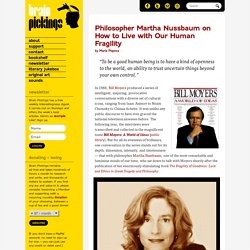

Erik Orsenna : “J’aime passer de la célérité à l’extrême lenteur ” Le Monde.fr | • Mis à jour le | Propos recueillis par Anne-Sophie Novel Série.

A une époque de profondes mutations, le rapport au temps est chamboulé. Nous avons invité des personnalités et des anonymes de tous horizons à se confier sur ce vaste sujet. Cette semaine, Erik Orsenna, économiste, écrivain, membre de l’Académie Française, et ancien conseiller de François Mitterrand. Lorsqu’on l’interroge sur son rapport au temps, l’académicien glisse spontanément : « J’aime me tromper, et le fait d’opérer chaque semaine un examen de conscience sur les erreurs que j’ai faites me permet d’avancer ».
Le temps est-il un sujet d’inspiration pour vous ? Le temps est d’une infinie diversité qui me ravit, une diversité plus vaste que celle de l’espace. Comment se répartit votre temps d’écriture ? Il s’aménage selon deux dimensions : le long terme, qui me permet de savoir deux ou trois ans à l’avance ce que je vais écrire. How to Dare to Begin. It’s natural to think that it must be a huge advantage for artists living in Paris to have the Louvre on their doorstep.

All that inspiration. All that encouragement. They can drop in at any time and see the works of the greatest masters. So, it can be a bit of a shock to learn that quite a few of the most interesting artists have harboured very different feelings about the museum. Corot, Camille Pissarro, Apollinaire, Braque, Picasso, Gauguin, Léger, Duchamp: at various times in their lives they all expressed the same longing – to burn the place to the ground. Think of a Bach concerto or the uncanny fit of words and music in Hey Jude; the white garden at Sissinghurst or the poetry of E.
Imagine you were really interested in painting, because you’d fallen in love with some of the works of Raphael. Raphael, Saint Catherine of Alexandria (1507) You might be keen to look at his paintings at every available opportunity, but doing so might be both thrilling and depressing. It’s very lovely. Philosopher Martha Nussbaum on How to Live with Our Human Fragility. By Maria Popova “To be a good human being is to have a kind of openness to the world, an ability to trust uncertain things beyond your own control.”

In 1988, Bill Moyers produced a series of intelligent, inspiring, provocative conversations with a diverse set of cultural icons, ranging from Isaac Asimov to Noam Chomsky to Chinua Achebe. It was unlike any public discourse to have ever graced the national television airwaves before. The following year, the interviews were transcribed and collected in the magnificent tome Bill Moyers: A World of Ideas (public library).
But for all its evenness of brilliance, one conversation in the series stands out for its depth, dimension, intensity, and timelessness — that with philosopher Martha Nussbaum, one of the most remarkable and luminous minds of our time, who sat down to talk with Moyers shortly after the publication of her enormously stimulating book The Fragility of Goodness: Luck and Ethics in Greek Tragedy and Philosophy. Martha Nussbaum. Philosopher Martha Nussbaum on How to Live with Our Human Fragility.
"How-to" Build This Log Cabin for $3,000. Caveman Chemistry by Kevin Dunn. My recent post on glassknapping mentioned Kevin Dunn’s 2003 book Caveman Chemistry, and I’ve received many requests for a dedicated review.

So here goes! Caveman Chemistry came to my attention a few years ago through the Lindsay Technical Books catalog. I’m a chemist by profession and a hacker by calling, with a long-standing interest in garage science, so the book’s title was basically irresistible to me. I plunked down my nickel and twiddled my thumbs for a week while the snails carried it to my doorstep.First, it’s a big book, topping out at 410 pages, which is prodigious for a project-based book, and it follows the conventional format of one project/activity/subject per chapter. The topics are arranged in historico-chronological order from fire-making to plastics-making, giving a nice hands-on history of chemistry between two covers.
Unlike Mad Science, of course, all the projects in Caveman Chemistry are intended to be replicated by the reader. Mr. Related. The Backyard Blacksmith by Lorelei Sims. The Human Experiment: Two Years and Twenty Minutes Inside Biosphere 2 by Jane Poynter. Practical Bamboo by Paul WItthaker. The Boy Electrician by Alfred Morgan. Country wisdom and know how. Basic butchering of livestock by John Mettler. Living on an Acre: A Practical Guide to the Self-Reliant Life. Understanding Wood: A Craftsman's Guide to Wood Technology. Nature's Garden: A Guide to Identifying, Harvesting, and Preparing Edible Wild Plants (9780976626619): Samuel Thayer.